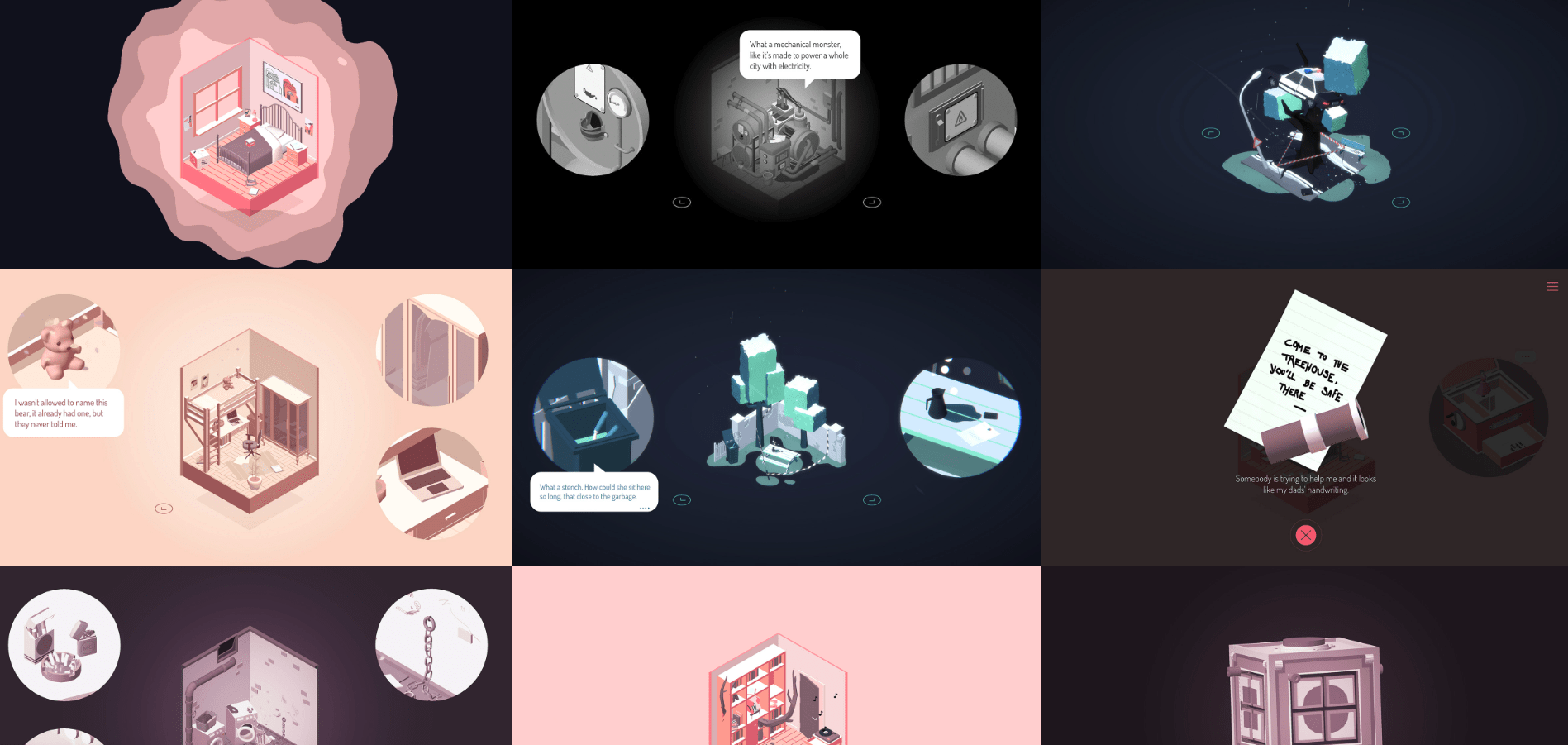The Almost Gone is a mystery and puzzle game designed by Joost Vandecasteele and published by Happy Volcano. It is available on IOS, Android, Switch, and Steam, targeting players ages 12+ who enjoy puzzle solving and beautiful scenes, and will not step away from depressing games. I played this game on the IOS platform.
The puzzles in the game guided players through the embedded narrative through the exploration of different rooms with well-defined spaces and balanced challenge levels. The game has a great combination of Information and object puzzles. With this mechanism, players will also see narratives related to the story of the girl and her family when collecting the clues to puzzles. At the same time, to collect clues, players need to click through different objects in each room and explore every room, which contains different narratives along with objects. In this way, the process of solving the puzzles guides and motivates the players to explore the whole story. Finally, there is well-defined feedback that is either related to the narrative or visual enjoyment after solving the puzzles. The players clearly understand that they are moving further into the story and will not get lost.
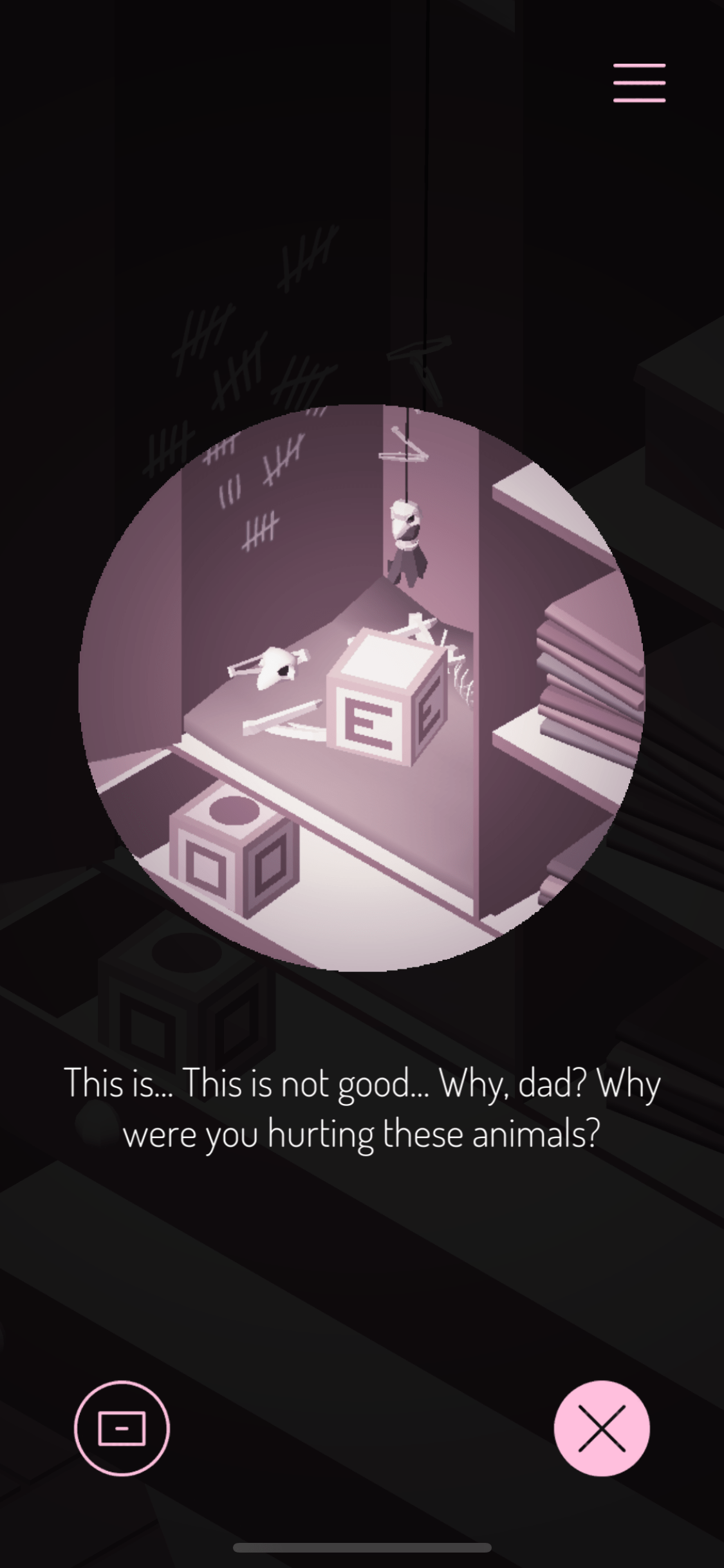
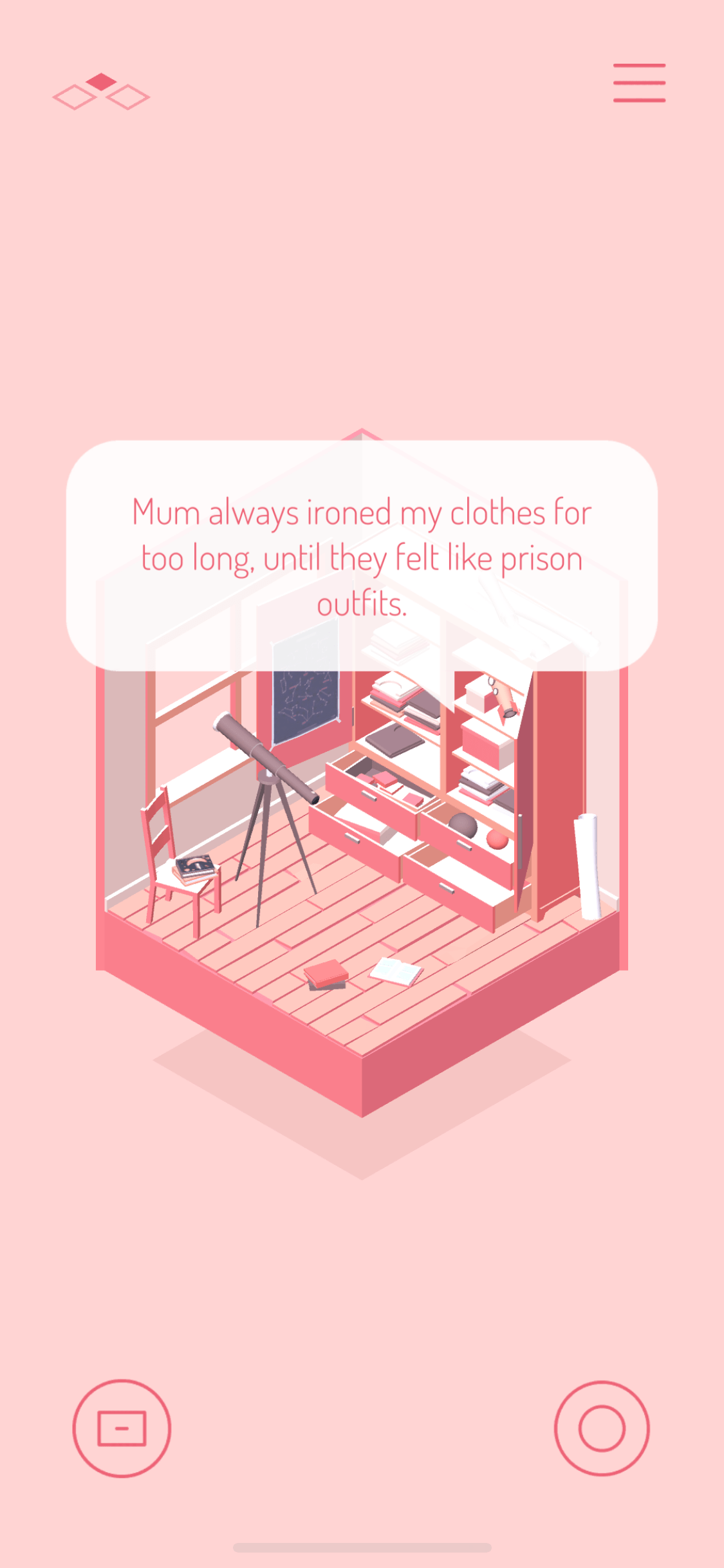
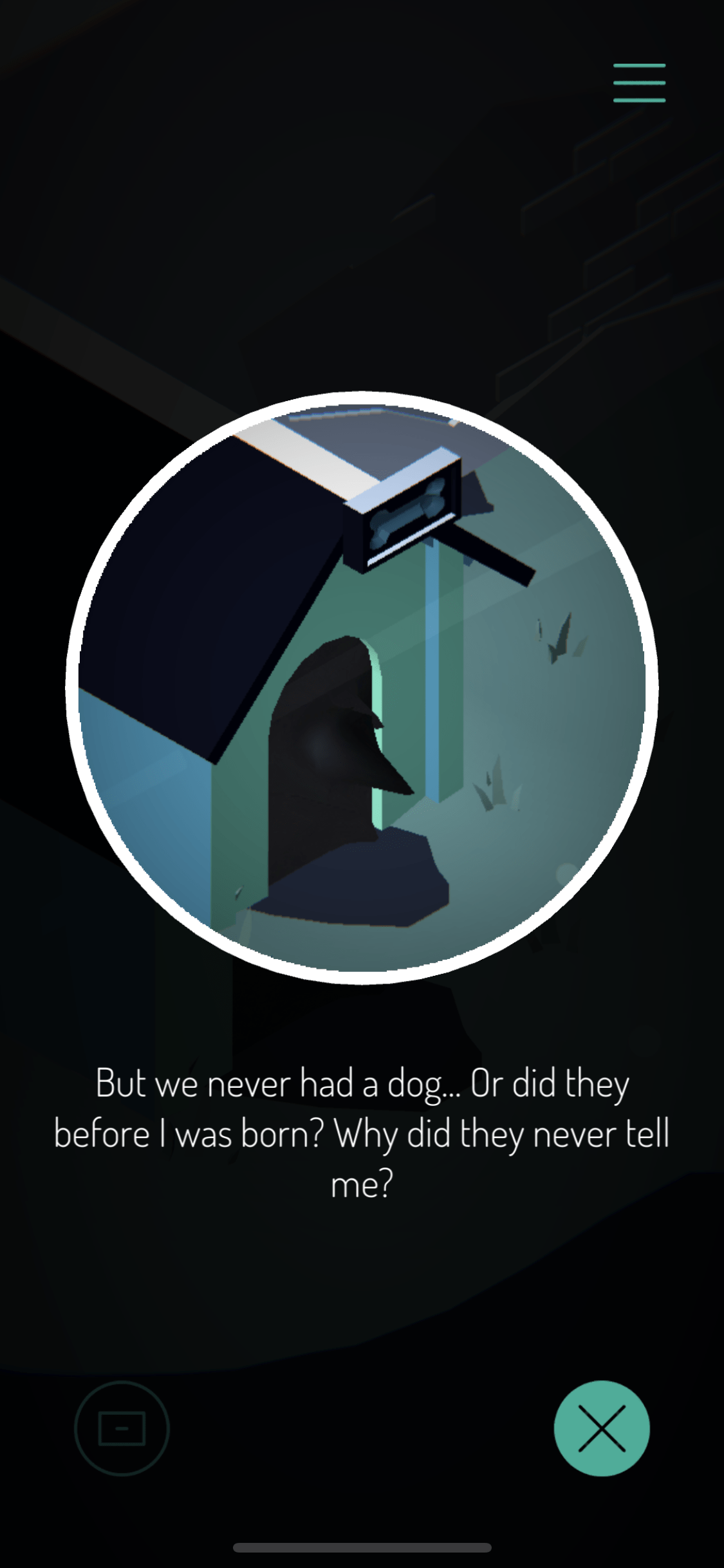
The scene contains clues to the puzzle (the boxes with E, circle, and square) and at the same time shows the narrative that maybe the girl’s dad had intention for violence (Left). The objects that tell the stories of the girl’s family (Middle). Lots of questions are asked to prompt thinking about the narratives while also containing information (dogs) about the puzzles (Right).
The game also utilizes space and plots well and has balanced challenge levels for puzzles that improve the flow of the narrative and improve players’ retention. The plots are blended with the space to guide users into different sets of narratives. For example, beside the map for each level, it has puzzles that prompt players to go to the past to find clues, which is visually represented with older and darker scenes. Such changes in the environment allow transitions in the plot to progress the narrative to learn more about the girl’s story. It also expanded the game’s space which allowed more narratives in different timelines to explore. There are also dynamics in the difficulty levels of the puzzles. For example, in the first chapter, the players only need to go to the past to find some clues, while the past scenes also involve puzzles in the later chapters. The puzzles also have balanced challenge levels, with enough clues to guide players to solutions. For example, there are machines where it is hard to tell what players need to find and provide to make it work. However, when players click on it, it will clearly state that the players need to find gas for it. Similarly, it is clearly stated in another puzzle that we need to turn on the light first to solve it, need something with a round base, or the final goal of the chapter related to a model of the house. At the same time, the puzzles are not too easy to solve. For example, players still need to deduct and think about how to find the objects required and go to the past to find clues and solve additional puzzles. They (at least me) might also get lost given there are no clues of where you are versus where to find the object you want in the large map. This process also involves gradually learning the interactable objects in the scene to unlock the stories afterward.
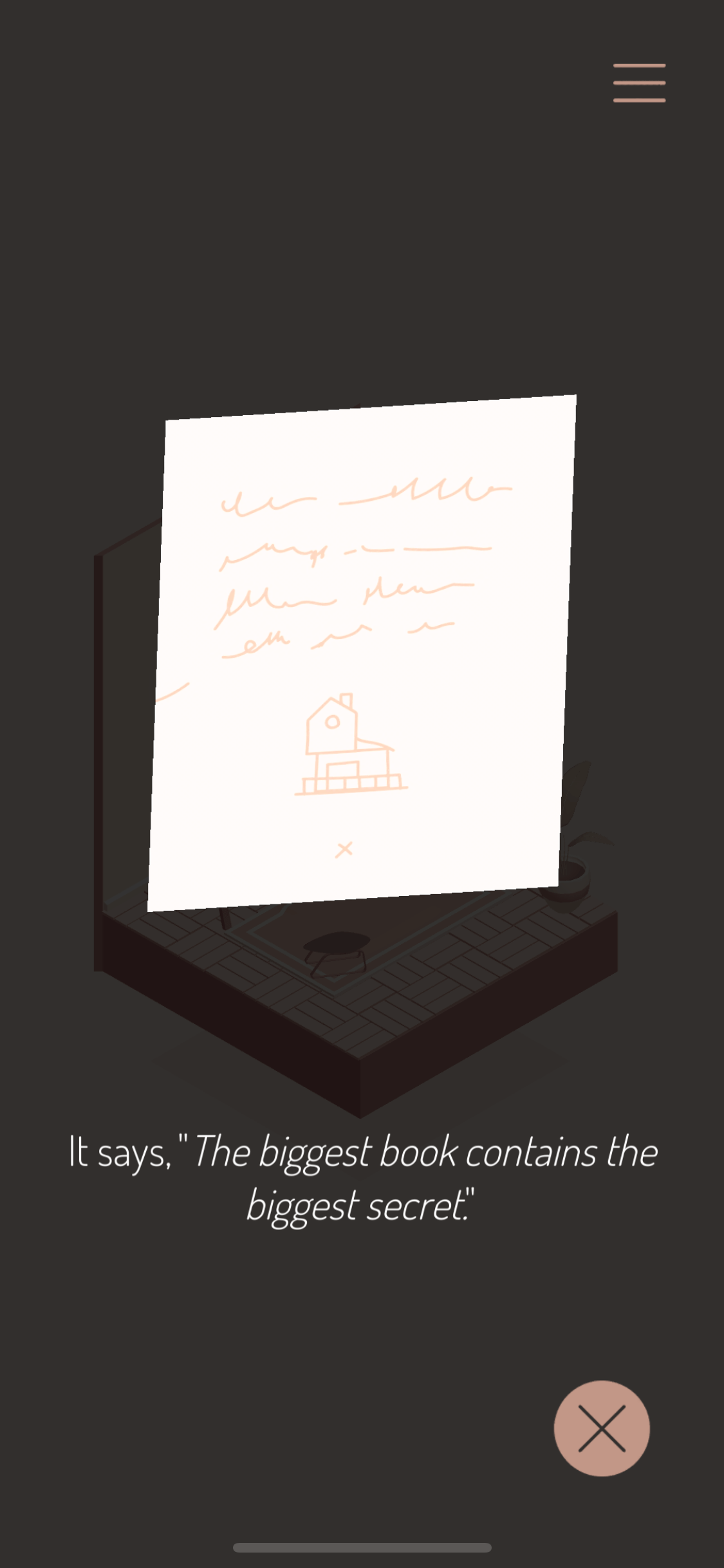
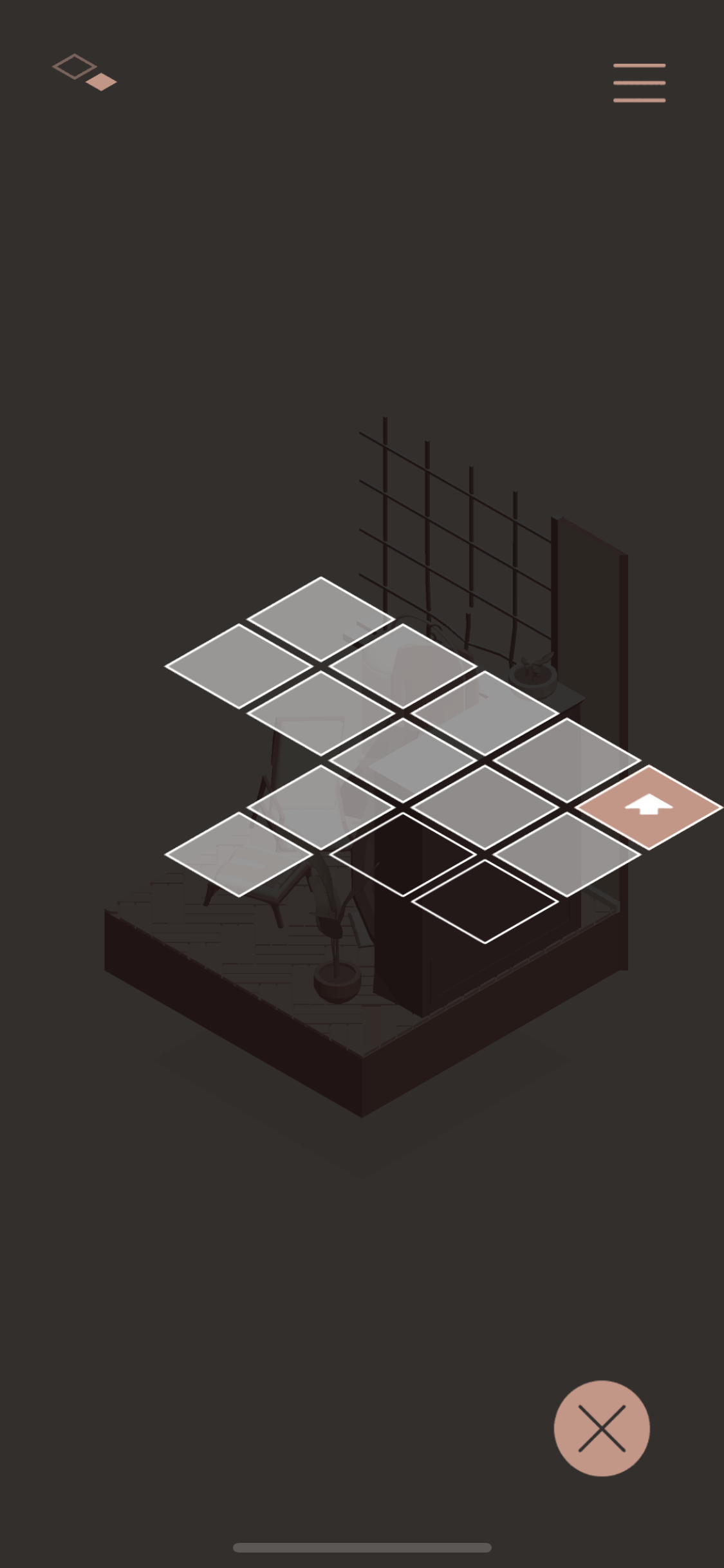
I was given a clear clue that the final (largest) puzzle to unlock the next level is related to the house model as in the sketch (Left). Also, when exploring, the map without details adds difficulties to navigation while providing the location in the map, achieving a good balance on how much the game wants to help players walk around (Right).
Overall, the game is enjoyable with the beautiful scenes but it is sometimes actually a bit creepy and the whole story is depressing, which might bring potential flaws of the game. Attracted by the Monument-Valley art style, I at first thought that this game would be healing, but things went totally different with a sudden shock from a broken cake with a knife in it, appeared with a loud sound. The mood of the game also becomes depressing with the darker and cooler colors, involving some violence and death. I really hope that there is a warning somewhere stating at the beginning that this game is a depressing game with a bad ending instead of the one that players can enjoy when they feel depressed and stressed in real life. In other words, I hope that the target audience could be more clearly stated on the purchase page.
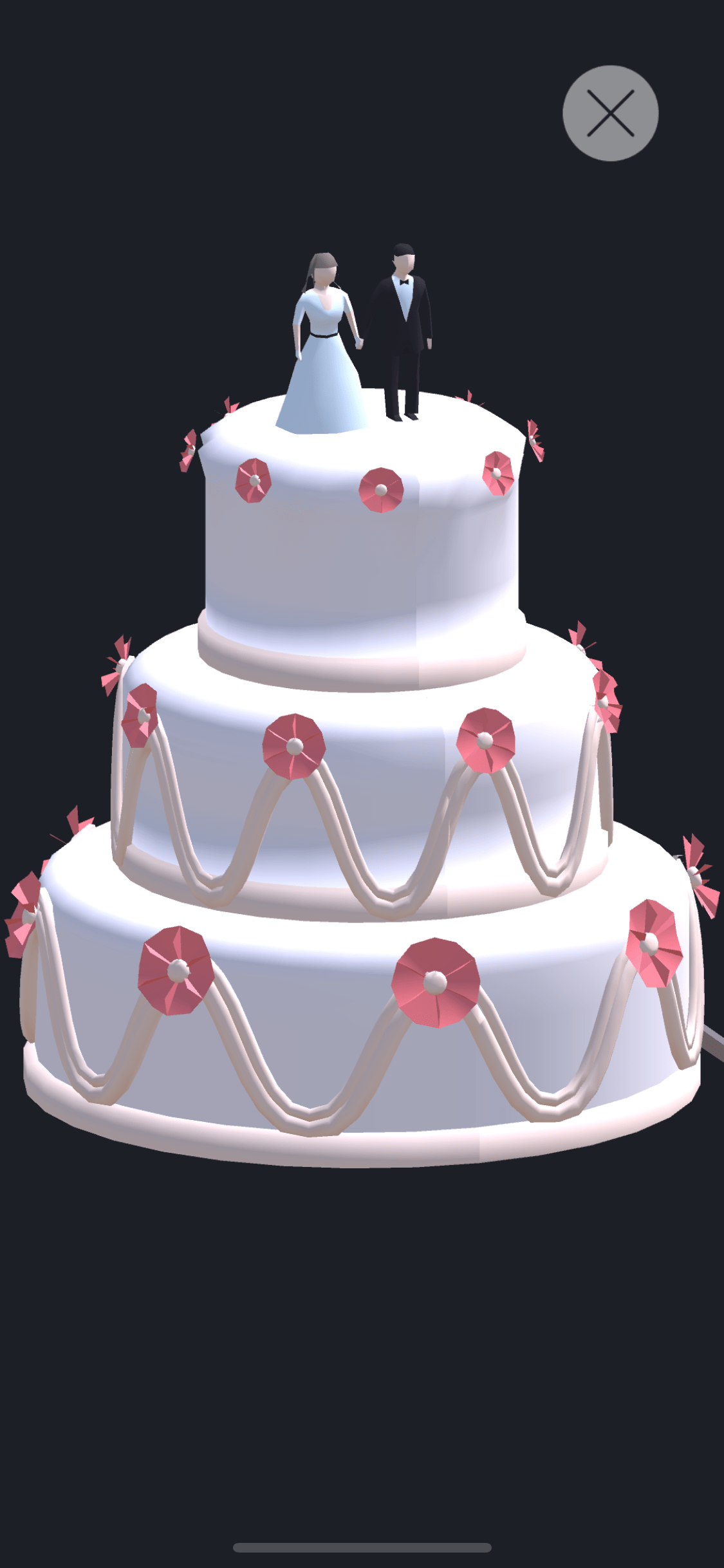
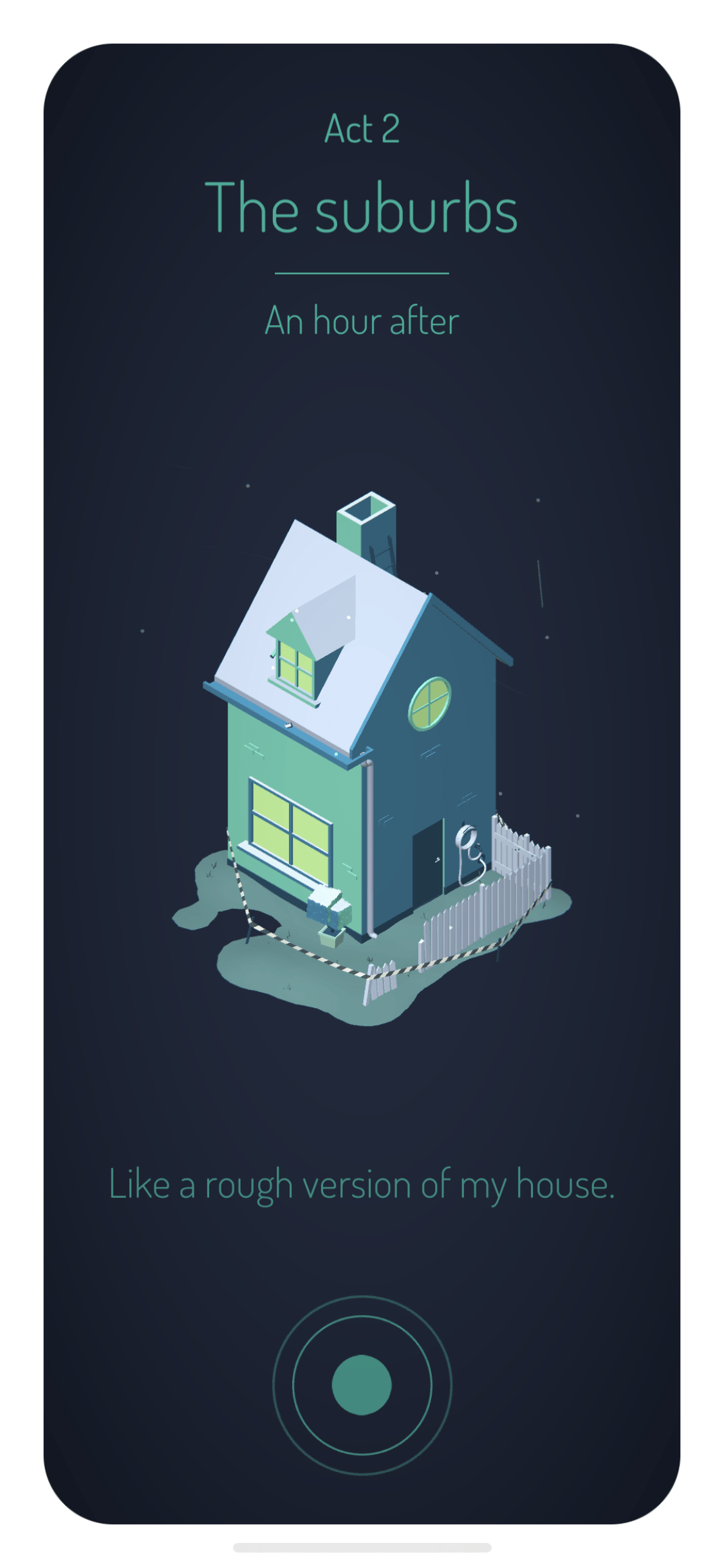
I was shocked a lot when this cake suddenly broke into two with a loud noise and hoped someone could warn me about this (Left). The color schemes and moods also became really depressing since the second chapter (Right).
At the same time, similar to other games on the IOS platform (or maybe mobile platform in general) and along with a large number of narratives, the small screen of the phone does restrict the mechanisms, such as the hardness to accurately click on the exact object to interact. For example, there are also narratives at a point close to the point to click to go back to the current time, but I got stuck at that point for a super long time and failed to go back since I always click on the point for narratives. I think having too many interactable objects might also worsen the puzzle-solving process. Even on the larger screen, having so many stand-alone narratives will make players easier to get lost when solving the puzzles. For example, when I was solving the puzzles, I thought the narratives provided no clues or information, but I spent a long time reading them repeatedly since I was afraid that they indeed contained the clues. It could be improved if the designers provided options to use different UIs for the pure narratives and narratives with clues to reduce confusion.
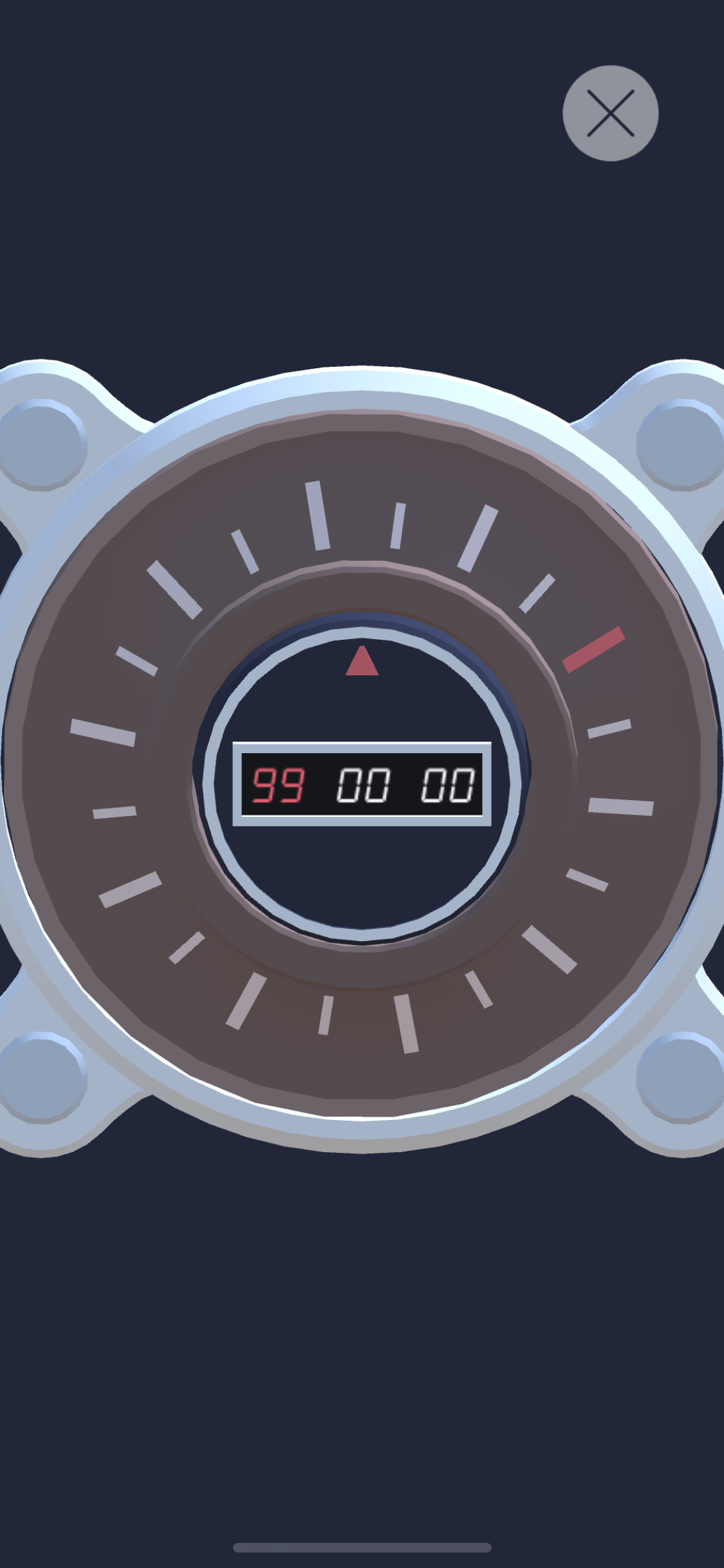
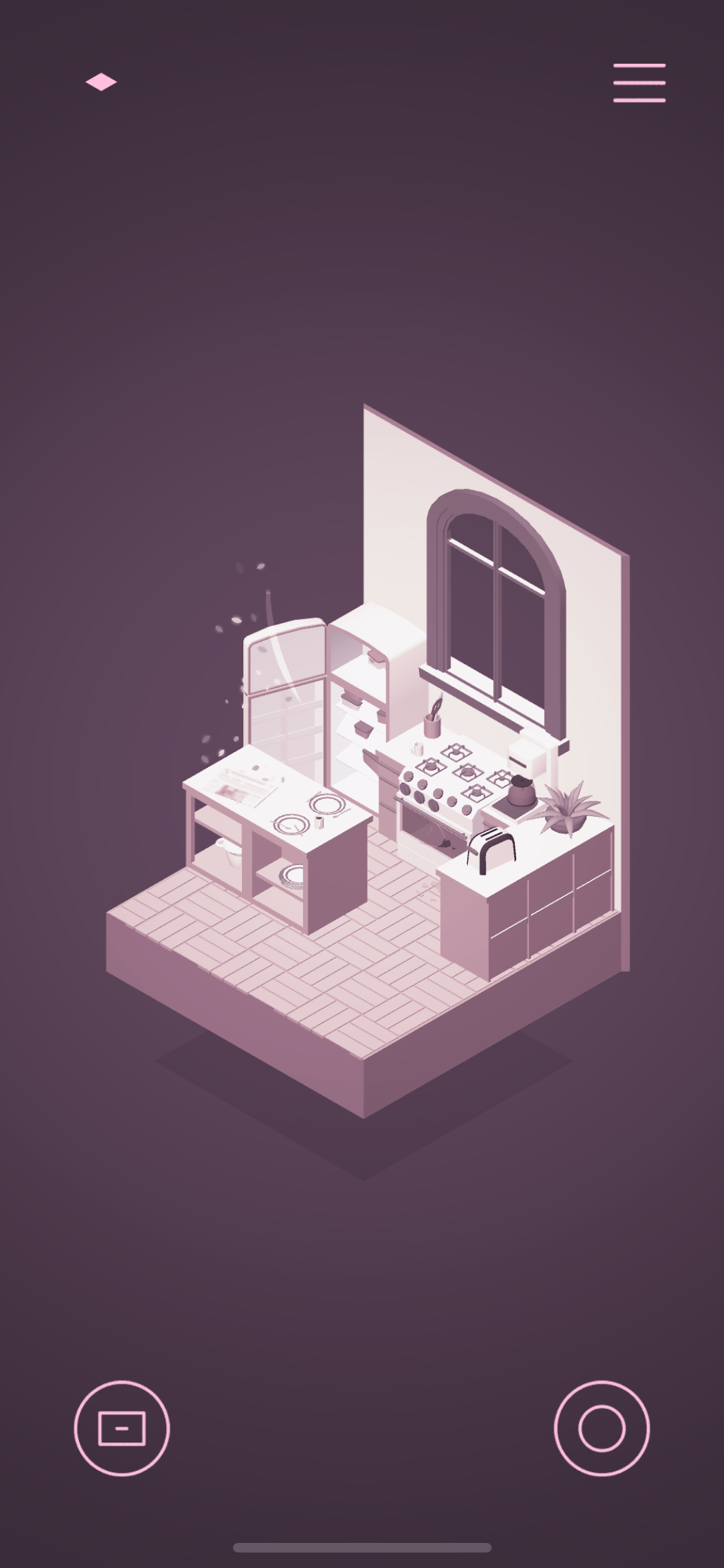
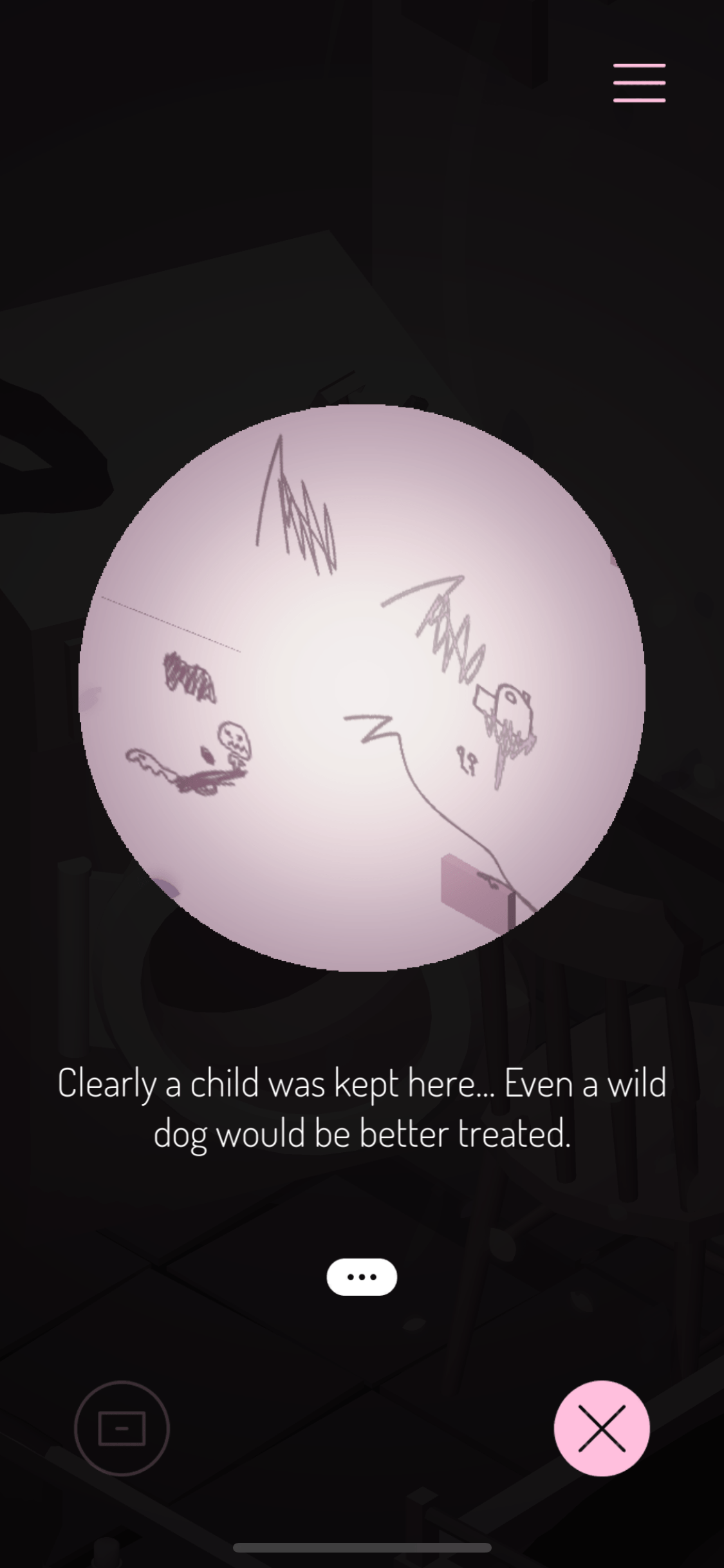
I spent a long time on this lock even though knew the solution, simply because it is hard to rotate to the correct solution (Left). I got stuck in this scene for a long time just because I always clicked wrongly at the narrative interaction instead of pointing to go back, which is too close (Middle). The scene to enlarge objects to show details has the same UI with the clues or puzzles, which confused me lots of time on whether it indeed has clues or is just about the story (Right).
(Reference: the feature image is a screenshot from the website of the game as it provides better visualization of the game content compared to the mobile version)


